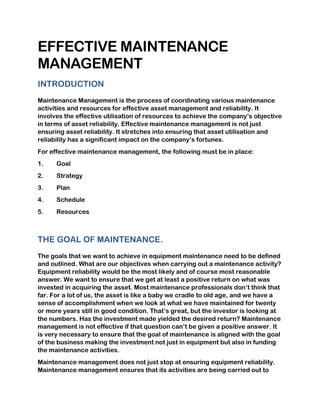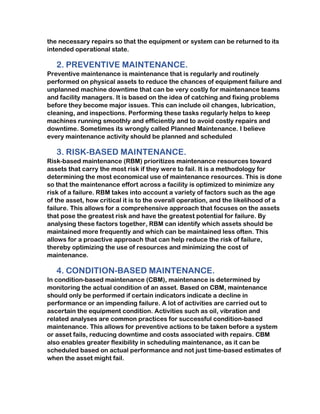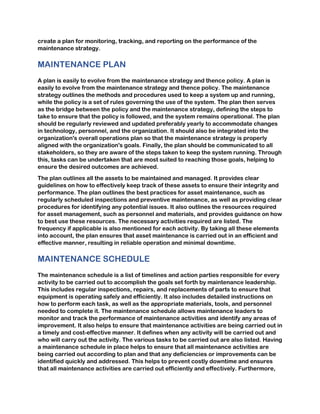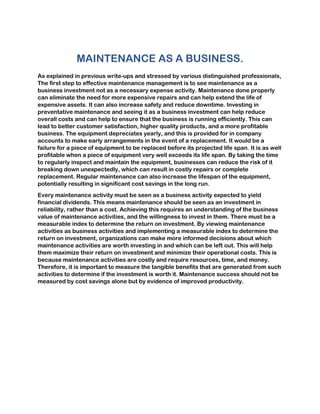The document discusses key aspects of effective maintenance management, including defining goals, developing strategies and plans, creating schedules, and allocating resources. It emphasizes that maintenance should be viewed as a business that supports organizational goals and profitability. Effective maintenance management requires considering maintenance a strategic investment rather than just an expense.







